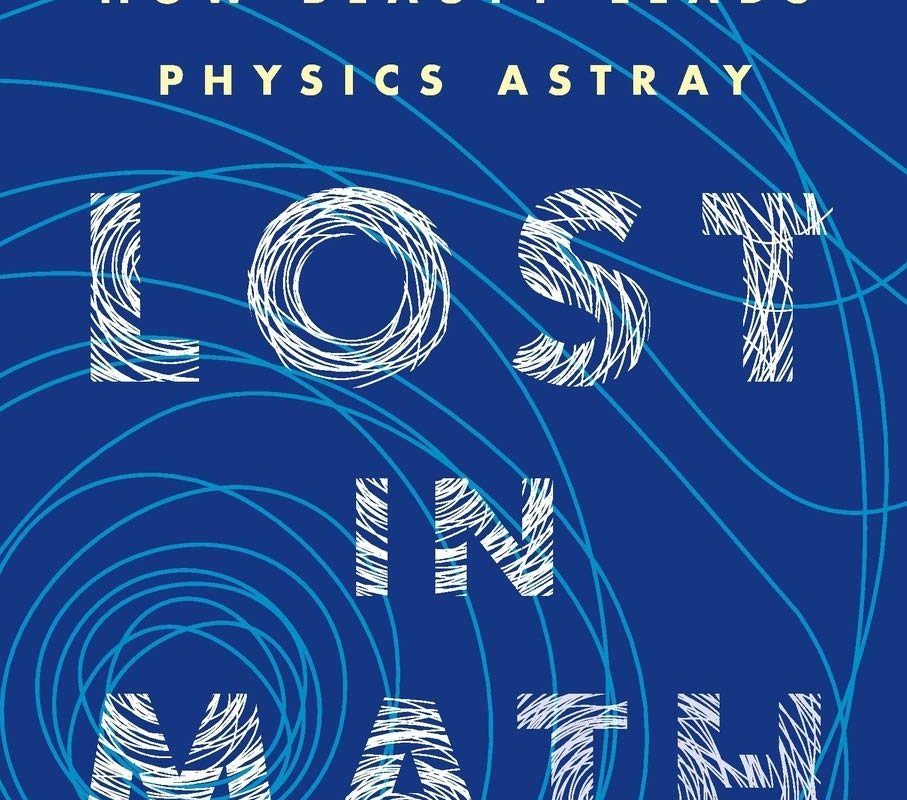An Agnostic Scientist & A Christian Philosopher Agree On Something?!?!
Lost in Math: How Beauty Leads Physics Astray by Sabine Hossenfelder
Synopsis:
A contrarian argues that modern physicists’ obsession with beauty has given us wonderful math but bad science.
Whether pondering black holes or predicting discoveries at CERN, physicists believe the best theories are beautiful, natural, and elegant, and this standard separates popular theories from disposable ones. This is why, Sabine Hossenfelder argues, we have not seen a major breakthrough in the foundations of physics for more than four decades. The belief in beauty has become so dogmatic that it now conflicts with scientific objectivity: observation has been unable to confirm mindboggling theories, like supersymmetry or grand unification, invented by physicists based on aesthetic criteria. Worse, these “too good to not be true” theories are actually untestable and they have left the field in a cul-de-sac. To escape, physicists must rethink their methods. Only by embracing reality as it is can science discover the truth. (Taken from GoodReads page)
Review
On the recent episodes of our podcast, Cave To The Cross Apologetics, we are going over Mitch Stoke’s book “How To Be An Atheist: Why Many Skeptics Aren’t Skeptical Enough“. This book is kind of the secular version of it. Hossenfelder does a decent job of presenting the issue she has with the way current quantum physics is presented; in that symmetry and beauty are looked at for which theories should be invested in. She does cover different parts of quantum physics and different theories like superstring theory and multiverse theory. She even covers one interview who almost questions the foundations of quantum physics.
Worldview Still Plays A Key Role
This book lends a lot of firepower to what Stokes says in his book. Scientists aren’t really trying to find truth, they are trying to find what works within their theories. They are also looking at beauty and symmetry as data points in their theories that work best. They assume they will find it in their answers. A lot of presuppositions are exposed in Hossenfelder’s book.
However, one key part that is missing which would have been nice would be someone who questions whether quantum physics might not just be a working theory that will implode one day and what we thought we were looking at as being true, was incorrect. Still, the issues with theories are presented well. Although I would rate the need to understand the science as moderate to hard depending on your background. If you’re picking up this book, though, you might already have an existing interest in the subject and know what she’s speaking about better.
Summary
There are other nitpicks I could have here and there and address what’s not in the book but overall, I enjoyed reading this book especially after completing the first half of Mitch Stokes books that really address this topic when it comes to presuppositional beliefs, over-trusting what we think scientists are claiming, and; as the book does also bring up, current theories seem to be stuck with too many possible theories still looming to be tested.
Final Grade
B-
Get The Book Or Audio Book (And Support The Show)
Kindle Version – https://amzn.to/3rOFjJN
Paperback Version – https://amzn.to/3fjlg11
Hardcover Version – https://amzn.to/3C8e55B
Audible Version – https://amzn.to/3iimjQZ
Try Audible For Free – https://amzn.to/3cN0giE
Cave To The Cross GoodReads Page
 To check out more reviews and see what Patrick’s reading go to his GoodReads page here.
To check out more reviews and see what Patrick’s reading go to his GoodReads page here.
Other Book Reviews Here
Read other book reviews on the blog here.









